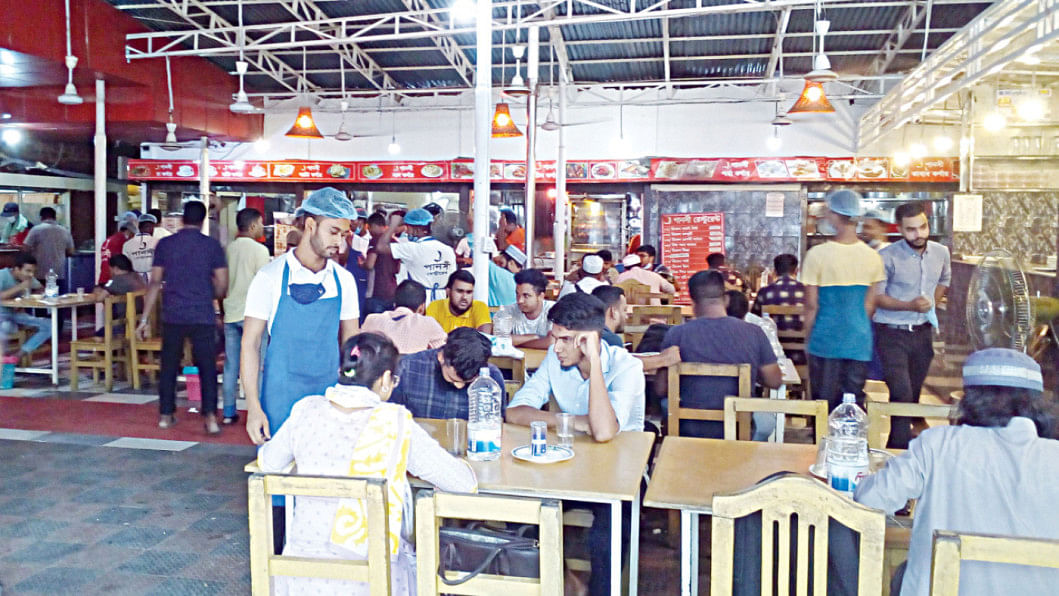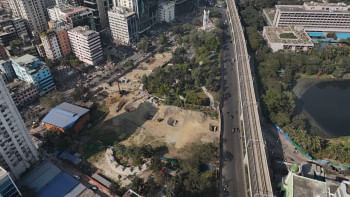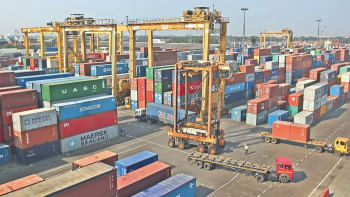In Dhaka, relaxation comes with a bill

In Dhaka, "going out" has become synonymous with "going out to eat." From Gulshan's rooftop cafés to themed restaurants in Dhanmondi and Banani, Dhaka has built a sprawling entertainment culture inside its eateries. There are no open parks to relax in, no safe and shaded walkways to stroll, no waterfronts to visit without congestion and chaos. Instead, leisure in Dhaka has become almost entirely restaurant-dependent. Whether it's a birthday celebration, reunion, a date, or just a weekend outing, our choices revolve around where to eat, not where to be. This isn't just a lifestyle choice; it's a reflection of a city in crisis when it comes to public recreational infrastructure.
The World Health Organization (WHO) recommends a minimum of 9 m² of open space per person in urban areas. Dhaka offers less than 1.5 m² of formal open space per resident. For a city of more than 22 million residents, the number of truly walkable parks, cultural venues, or open-air recreational zones is shockingly inadequate. Limited government investment, fragmented land ownership, and rapid, uncoordinated development have left entire neighbourhoods devoid of free recreational options.
So, what do we do? We head to restaurants. Not because we're food-obsessed, but because they are the only socially acceptable and physically available spaces where we can sit, breathe, talk, and connect. For many citizens, particularly the middle and upper-middle class, these venues function as "quasi-public spaces."
This trend, while adaptive, is deeply problematic. First, it commercialises the very idea of leisure—turning every moment of relaxation into a paid experience. And it excludes millions of low and middle-income residents who cannot afford Tk 300 coffees or Tk 1,000 dinners just to enjoy a peaceful evening.
Second, it amplifies congestion and zoning conflicts. Many entertainment-focused restaurants operate in residential areas, creating traffic, noise pollution, and land-use imbalances. And because these spaces are private, they often lack accessibility for the elderly or people with disabilities. There is no regulation around how they should serve as community venues, because they were never meant to.
Most importantly, turning entertainment into a private activity makes people feel less connected to public spaces. The absence of child- and age-friendly recreational infrastructure in Dhaka city deepens social isolation, limits healthy ageing, and deprives children of their right to play. Children grow up without knowing how to picnic in a park. Elderly citizens have no place to walk or rest. Families cannot enjoy a weekend outdoors without first checking a menu. Urban planning must urgently integrate inclusive public leisure zones to support intergenerational wellbeing.
Recent incidents have also exposed the darker side of Dhaka's restaurant-based entertainment culture. Several tragic events, including fatal restaurant fires due to poor safety compliance and overcrowding, have claimed lives and raised serious concerns about the unregulated growth of these establishments. The absence of proper fire exits, unchecked kitchen gas connections, and illegal rooftop expansions in many eateries pose grave risks to public safety. Without strong urban regulations and enforcement, these makeshift leisure zones can become hazardous rather than hospitable.
As an urban planner, I strongly believe that Dhaka's future must include a renewed commitment to inclusive urban leisure. A sustainable and equitable Dhaka must recognise recreation as a public good, embedded within the built environment. Below are some core planning priorities that can guide this shift:
Every major neighbourhood in Dhaka should have at least one properly maintained public park, playground or civic space—safe for all ages, and equipped with seating, lighting, restrooms, and accessibility features. The maintenance of these spaces can be transferred to local ward offices or public-private partnerships with citizen oversight mechanisms.
Future land-use plans must mandate the inclusion of green and civic spaces in both residential and commercial development schemes. There is a need to maintain the updated FAR (Floor Area Ratio) incentives to reward developers who integrate rooftop gardens, courtyards, or community plazas.
Abandoned government plots or unused railway lands can be turned into urban forests, open-air auditoriums, or cultural centres through low-cost, community-led models. For this, low-cost pilot placemaking projects can be initiated in collaboration with NGOs and youth groups to develop urban forests, mural installations, street theatres, and weekend community markets. Temporary "tactical urbanism" trials, such as pop-up libraries, sports courts, and seating areas, need to be encouraged to test community response before permanent implementation.
Cultural zoning needs to be implemented in the city's land-use plan to allow for open-air performance spaces, creative hubs, and weekend cultural streets. There is also a need to develop an urban entertainment licensing system to regulate restaurants, rooftops, and cafés that host events—ensuring compliance with noise limits, parking regulations, and inclusive access.
Dhaka's reliance on restaurants for entertainment is the direct result of decades of planning that failed to account for the emotional, social, and cultural lives of people. Restaurants will always be part of a vibrant city, but they cannot be the only choice for connection, celebration, or rest. A liveable city should give people places to enjoy without having to spend money.
Mowtushi Poit is assistant professor at Bangladesh Institute of Governance and Management (BIGM).
Views expressed in this article are the author's own.
Follow The Daily Star Opinion on Facebook for the latest opinions, commentaries and analyses by experts and professionals. To contribute your article or letter to The Daily Star Opinion, see our guidelines for submission.


 For all latest news, follow The Daily Star's Google News channel.
For all latest news, follow The Daily Star's Google News channel. 





Comments